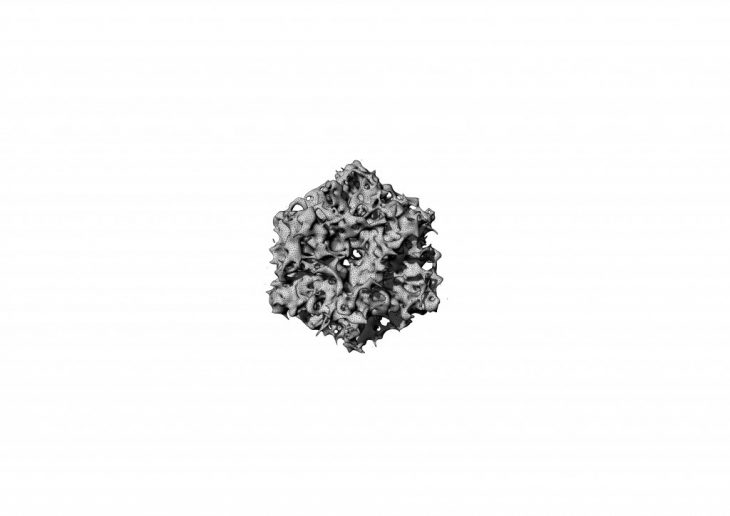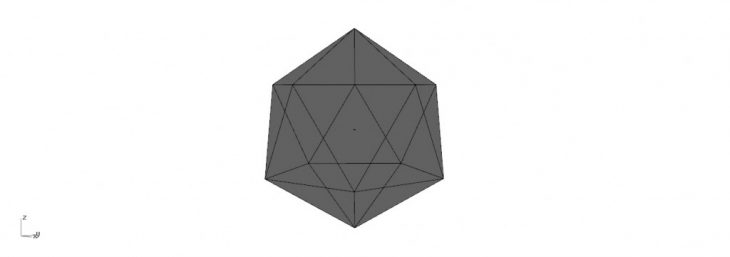
A liquidahedron
The goal of this assignment was to recursively transform a platonic solid icosahedron.

An icosahedron.
The initial geometry was divided into a population of points that were picked from the various edges and faces of the initial form.

The population of points of the icosahedron.
After the population of points was gathered, a random vector was assigned on each point by using the Grasshopper plug-in Boid and all the vectors were targeted towards the center of the icosahedron.Moreover, a instead of a straight line from the points to the center, a seemingly-random path was created to connect the population of points to the center.

The paths that were recursively created guide the points to the center of the geometry.
Finally, by using the geometry-wrapper Coccoon a liquid form was defined to surround the points and to create the viscous forms that were recursively created through the plug-in Anemone.The final mesh was visualised in black and white to show the comparison between the variety of volume that can be found in the geometry. The end result is mostly monochromatic because the final geometry is one mostly made by one continuous mesh.

The points wrapped with Coccoon.
By further smoothening the geometry and by giving the meshe’s faces and boundaries some extra thickness it was possible to create two basic iterations, one that is made entirely of the faces frames and one that is a combination of the meshes’ frames and windows.

The frames of the liquidahedron.

A combination of the frames and windows of the liquidahedron.
The following video demonstrates the transformation of the original shape:
Liquidahedron is a project of IaaC, Institute for Advanced Architecture of Catalonia
developed at Master in City & Technology in 2016/2017 by:
Students: Alex Mademo
Faculty: Rodriguo Aguirre, Aldo Sollazo